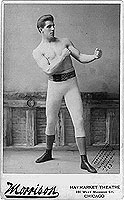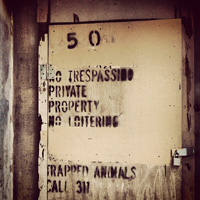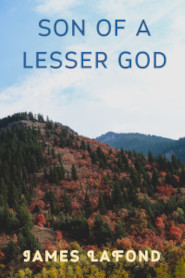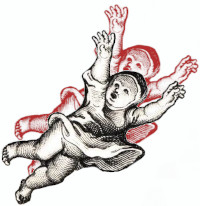This past Thanksgiving, one nuclear node of my extended family fractured around the political incorrectness of celebrating the iconic myth most recalled in this nation, of a feast shared between an Amerindian man named Squanto [an escaped slave of English and Spanish], some of his tribesmen and members of William Bradford’s “pilgrims”, English Congregationalists who, fleeing religious persecution in England, bought roughly two-dozen white slave-children [half of whom were worked to death that first winter] and sought Virginia, finding cold New England instead—and lucky for them. For the Survival rate in Virginia was only 5%.
As with the Virginia Plantation, the Plymouth Plantation only survived at the behest of the natives, who permitted their settlement and actually fed them. In Virginia, this swung between marriage and war and was not constant. But for about a decade, the Plymouth Colonists and local Indians got along better together than most alien races living in close contact. Eventually the honeymoon soured, and with increasingly strident waves of planters, beginning with Thomas White in 1630, the push to acquire more native land and negate the indigenous culture strengthened, resulting in three “warrs.”
It is worth noting that these New Englanders were kept pinned to the coastal regions for a hundred years by those heathens whose devilishly forested lands they sought to turn into Levantine pasture in the founding of their New Israel.
It is a thing embedded in African American mythology, the ancient bounty of the gift turkey. Even in Urban America, as it descends into feral savagery, greens prepared with smoked turkey wings are regarded as premium Thanksgiving fare and black-eyed peas made with smoked turkey parts as good luck for the New Year. This has even devolved to the tradition of “grown-ass men,” having been neglected by absent fathers and drug addicted mothers, but clinging to a memory of such turkey-seasoned feasts at a grandmother’s or aunt’s house, coming to the frozen food section of a supermarket after dark and inquiring as to the purchase of a “big-ass” turkey potpie. When I was the clerk or manager on duty, understanding this, I would make certain to show them to the quality pot pies in the meat case, them standing there like a perpetual child trying to conjure up a good memory and then saving face with something like, “Ma Man—dat’s da shit right dare—thank you en Godbless.”
Despite the horrendous state of urban Black “Culture” even orphans become gang bangers retain more cultural resiliency than the suburban white American.
It is also worth noting that the central aspects of the American Thanksgiving feast are the Turkey and the pumpkin –replaced in the south with the sweet potato—representing native crops that were gifted to the newcomers and also the wild turkey, a valuable source of protein which the arriving weavers, soldiers, urban orphans and scholars were utterly incapable of providing for their own table. Thus the central aspect of this feast is nothing less than a reminder that European colonists only survived their first years in this land due to the tolerance and generosity of the Natives [who, as a practical matter, coveted allies with useful trade goods and powerful weapons].
The fact that the second and third waves of European immigrants, did, by their very admission, cheat and take from their Indian neighbors “in most un-Christian ways,” should not, in the mind’s eye of any mentally healthy person, be taken as evidence that the American Thanksgiving feast represents rampant white supremacy or hatred of Native Americans. What it truly represents is the notion that European Americans should be thankful that some native peoples extended a generous hand, in some cases maintaining the bound, in some withdrawing it and with some exacting terrible vengeance upon the greedy newcomers who seemed to take gift-giving as a sign of weakness and to ever demand more.
To this writer, Thanksgiving should be a reminder, that just as Metacomet’s people accepted economic and religious refugees (Congregationalist immigration to New England coincided heavily with plagues and fluctuations in the wool market in England [1]) who repaid their hosts by addicting their young men to an alien drug and raping their women [2] and aggressively negating their traditional way of life [3], we, Native Americans of this postmodern age, are likewise being replaced, addicted, raped and culturally erased.
Thanksgiving is a reminder of a gift unreciprocated and also, that you don’t want to be the white Indian bringing a turkey to your local immigration resettlement center.
Notes
1. T. H. Breen, Puritans and Adventurers, 1980
2. Increase Mather, A Brief History of the Warr With the Indians in New England, 1676
3. Thomas White, The Planters Plea, 1630
So Her Master May Have Her Again
A History of Runaway White Slaves in Plantation America: Part Two
Stillbirth of a Nation: Caucasian Slavery in Plantation America: Part One
link › jameslafond.blogspot.com











"... bought roughly two-dozen white slave-children [half of whom were worked to death that first winter]..."
Does anyone know the names of the 12 that died so we may say a prayer for their souls?
Bradford actually wrote of their refusal to convert on their deathbeds. They were called "duty boys" at this time and I will try and document their individual fates in The 13th Tribe. Roughly one third of the "pilgrim" party were unfree labor. I'll make sure and post the names I find.
I normally fairly callous but for some reason that sentence in the post stuck me...and made me very sad.